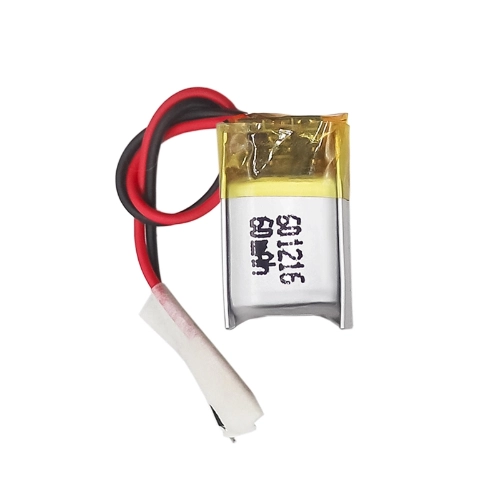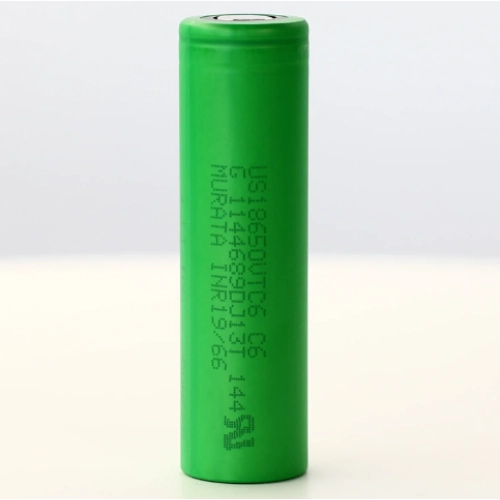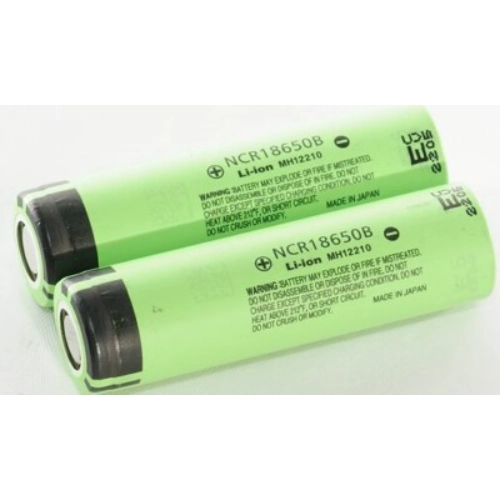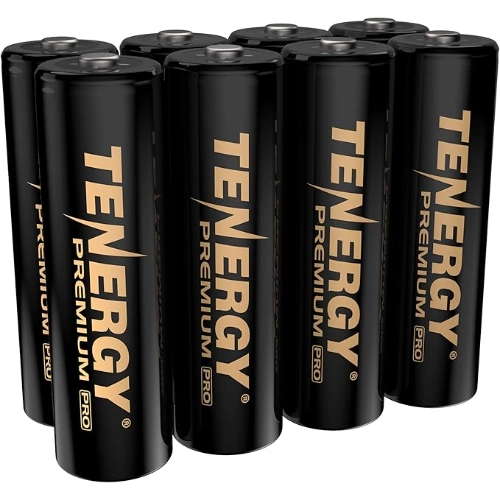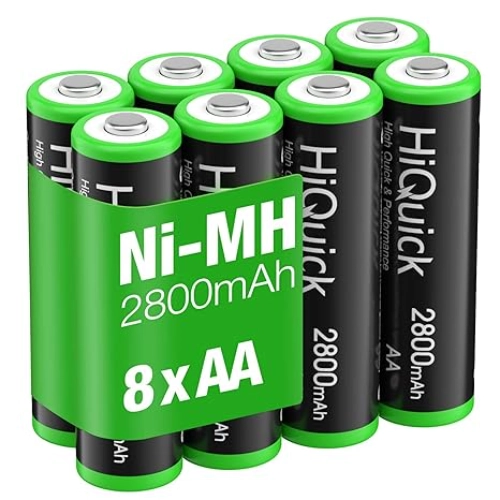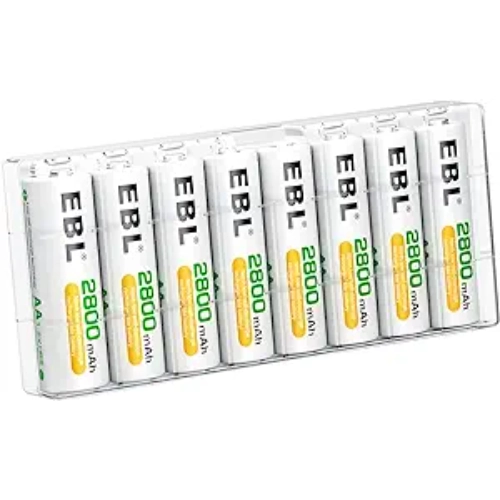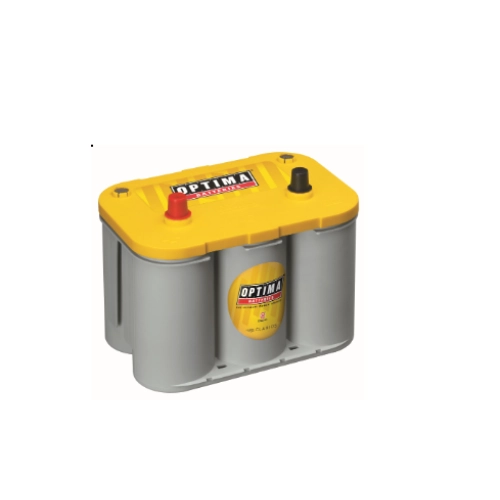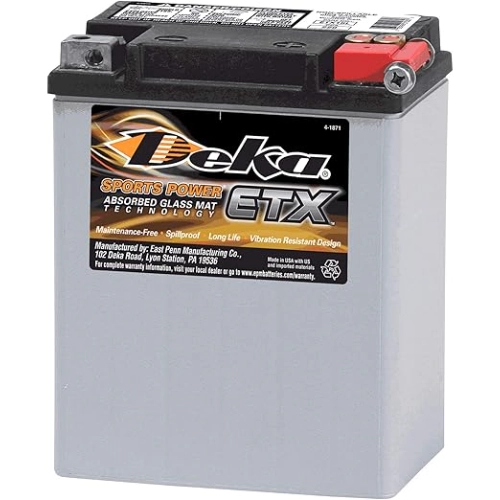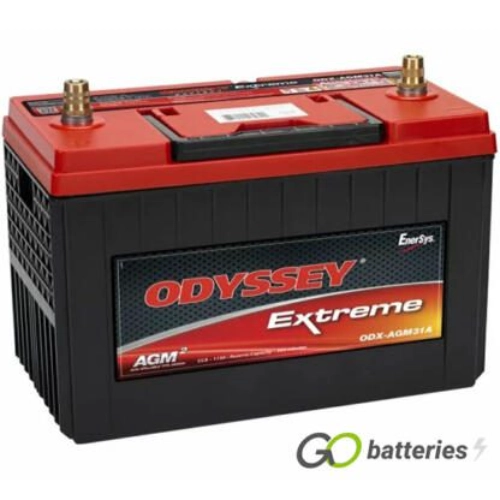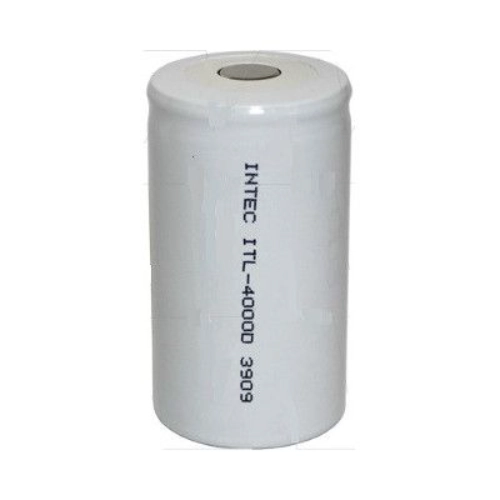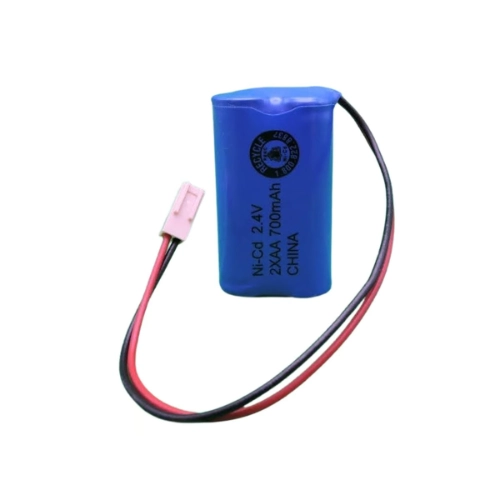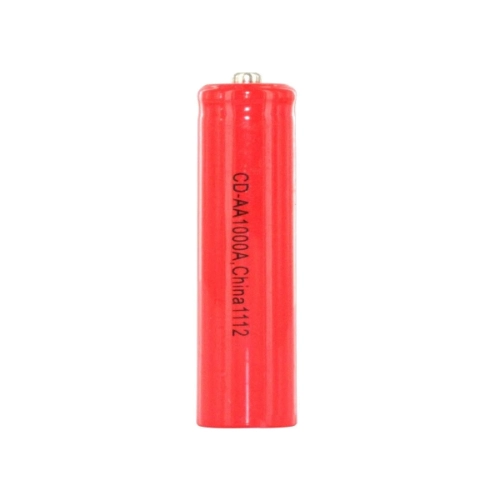Secondary batteries are at the center of our modern world. They are identified and implemented in numerous industries and uses, such as mobile phones, electric cars, electrical appliances, electronics, etc. Therefore, rechargeable secondary batteries are necessary for the operation of energy storage systems and promote the use of efficient energy resources.
While primary batteries are disposable types that can be used only once, secondary batteries have the feature of rechargeability.
Therefore, this article will describe secondary batteries, their top handpicked choices, and what they entail. It will also address some of the most asked questions regarding their performance and the duration that can be expected.
Part 1. Understanding secondary batteries
What is a secondary battery?
A secondary battery is designed to be charged and recharged repeatedly or several times. It contrasts with a primary cell, which dispenses energy once and is disposed of once all energy is utilized.
What is the difference between primary and secondary batteries?
Primary batteries are not rechargeable; therefore, they are disposable batteries. Like batteries, their energy is used up and cannot be capped up or recycled.
On the other hand, secondary batteries are rechargeable. They operate through chemical reactions that are ‘reversible’; thus, they can be charged, discharged, and then recharged multiple times.
Part 2. Recommended secondary batteries for different types
Lithium-ion Batteries
Lithium-ion batteries have high energy density and low self-discharge. Hence, they are appropriate in technologies that demand power endurance for extended hours. Let’s examine some Lithium-ion secondary batteries.
1. 3.7 V 60mAh Lithium-Ion Battery 601216
Specifications:
- Operates at a stable 3.7 V.
- Capacity of 60mAh for reliable energy.
- Functions in temperatures from -40℃ to 60℃.
- Includes protections against overcharging and short circuits.
- Cycle life of 100 cycles ≥92%.
Applications:
- Alarm clock
- Remote control
- Forehead thermometer
- Makeup mirror
- Glucose meter
2. Sony VTC6 18650 3000mAh Battery
Specifications:
- Consists of a nominal capacity of 3000mAh.
- Continuous discharge rating of 15A.
- Nominal voltage of 3.6V.
- Maximum voltage of 4.2V.
- Dimensions of 18.40mm x 65.7mm.
Applications:
- High-output flashlights
- Power packs
- Battery packs
- E-cigarettes
- High-drain devices
3. 3.6V Panasonic NCR18650B
Specifications:
- Nominal capacity of 3250mAh.
- Stable 3.7V discharge voltage.
- The high discharge current of 15A.
- Internal resistance ≤50mΩ.
- Charging time of 4.0 hours.
Applications:
- E-cigarettes
- Vacuum cleaning application
- Electric tools
- Cordless power tools
- RC models
- E-bike
Nickel-Metal Hydride (NiMH) Batteries
NiMH batteries are known for their high capacity and environmental friendliness. They are the most suitable choice when compared with older nickel-cadmium types. Let’s examine some secondary NiMH batteries.
1. Tenergy Premium PRO Rechargeable AA Batteries
Specifications:
- Capacity of 2800mAh.
- Reusable up to 1,200 times.
- Operates effectively between -4°F and 122°F.
- Advanced no-leak design.
- Trusted for fast refresh rates.
Applications:
- Camera flash
- Remote controls
- Wireless keyboards and mice
- Portable gaming devices
- Flashlights
2. HiQuick 2800mAh AA Rechargeable Batteries
Specifications:
- Capacity of 2800mAh.
- Rechargeable up to 1,200 times.
- Pre-charged and ready to use.
- Maintains 80% capacity after 24 months of non-use.
- Leak-free design for safe use.
Applications:
- Camera
- Digital devices
- Radio
- Toys
- Remote controls
3. EBL 2800mAh AA Rechargeable Batteries
Specifications:
- Capacity of 2800mAh.
- Rechargeable up to 1,200 times.
- Maintains 80% capacity after three years of non-use.
- Pre-charged and ready to use.
- Includes battery storage cases.
Applications:
- Indoor/outdoor devices
- Digital cameras
- Toys
- Remote controls
- Household electronics
Lead-acid batteries
Lead-acid batteries are known for their cost-effectiveness. Hence, they are widely used in various applications, such as automotive and backup power. They provide reliable power and are known for their longevity. Let’s check out some lead-acid secondary batteries.
1. YELLOWTOP® D34 Deep Cycle Battery
Specifications:
- Provides 750 CCA (Cold Cranking Amps).
- 55 AH (Amp Hours) capacity.
- Reserve capacity consists of 120 minutes at 25 amps.
- Weighs 42.9 lbs.
- Dimensions: 7.88 (height), 6.88 (width), 10.06 (length)
Applications:
- Car
- Truck
- High electrical demands
- Start-stop systems
- Heavy-duty equipment
2. Deka Sports Power ETX-15L
Specifications:
- 12 volts of power.
- Sealed lead acid composition.
- Weighs 11 pounds.
- No vent tube, preventing acid leaks and terminal corrosion.
- Maintenance-free design, no filling or activation needed.
Applications:
- ATV
- Motorcycle
- Snowmobile
- Personal watercraft
- Utility vehicle
3. ODX-AGM31A Odyssey Extreme Battery 12V 100Ah
Specifications:
- 12 volts and 100Ah capacity.
- Capable of supplying engine cranking pulses up to 2700 amps for 5 seconds.
- Pure lead plates for higher power density.
- Design life of 8-12 years (float).
- Service life of 3-10 years.
Applications:
- Heavy-duty vehicles
- Emergency vehicles
- Off-road vehicles
- Marine applications
Nickel-Cadmium (NiCd) Batteries
1. INTEC ETL-4500D
Specifications:
- Operates in environments up to 70°C.
- 1.2 volts with 500mAh capacity.
- High energy density, 50% higher than conventional Ni-Cd batteries.
- Discharges at up to 8C rate.
- Safety vent mechanism for pressure relief.
Applications:
- Test and measurement equipment
- Healthcare devices
- Wearable electronics
- Consumer electronics
- Emergency lighting
2. EverGreen NCAA700-2B
Specifications:
- 2.4 volts and 700mAh capacity.
- Its chemistry is used for rechargeability.
- It is equipped with a Molex 2510-2P connector.
- Reliable power source for specific applications.
- Compact design for easy integration.
Applications:
- Chloride 1003A097
- Backup power systems
- Emergency devices
- Portable electronics
- Battery packs
3. Powerizer CD AA 1000mAh 1.2V NiCd
Specifications:
- 1.2 volts with 1000mAh capacity.
- Ensures long-term rechargeability.
- Button top design for secure connections.
- Rapid charging capability.
- Ideal for high-drain applications.
Applications:
- High-drain electronic devices
- Remote controls
- Flashlights
- Portable tools
- Battery packs
Part 3. Benefits Of Using Secondary Batteries
The advantages of secondary batteries are numerous, as mentioned below:
- Provide economic benefits as you will use reusable batteries instead of throwing them after use.
- Although the initial cost may be higher, their ability to be recharged multiple times results in lower long-term costs.
- Secondary batteries are more environmentally friendly.
- They reduce waste by minimizing the number of batteries in landfills when considering the long term.
- They can be used for various applications, such as small gadgets, large-scale energy storage, and more!
Part 4. FAQs
-
What is the best type of secondary battery?
The best secondary battery depends on the specific application. Due to its capability of high energy density, lithium-ion batteries are often considered superior for general use. -
How many types of secondary batteries are there?
There are several types of secondary batteries, including Lithium-ion (Li-ion), Nickel-Metal Hydride (NiMH), Nickel-carbonium (NiCd), and Lead-Acid batteries. -
Which secondary battery is best for most extended-lasting?
Lithium-ion batteries are known for their long lifespan compared to other types. They can typically last between 500 to 1,500 charge cycles. -
How many years can a Li-ion battery last?
A Lithium-ion battery generally lasts 2 to 5 years, depending on how it is used and maintained. -
Do secondary batteries expire if not used?
Yes, secondary batteries can degrade over time, even if not in use.
Related Tags:
More Articles

How to Choose the Best Floor Scrubber Battery for Commercial Cleaning?
Selecting the ideal floor scrubber battery ensures a long runtime, rapid charging, and minimal maintenance for efficient commercial cleaning operations.
Battery for Blower vs Battery for Leaf Vacuum: Which One Should You Choose?
Battery for blower vs leaf vacuum—learn the key differences in power, fit, and runtime to choose the right battery for your outdoor tool needs.
How to Choose the Right Battery for Blower?
Choosing the right blower battery? Consider voltage, capacity, chemistry & usage. This guide helps match the best battery for peak performance.
How to Choose the Best Insulated Battery Box for Lithium Batteries?
Choosing the Best Insulated Battery Box for Lithium Batteries? Discover key factors such as size, material, and safety for optimal protection and performance.
7 Critical Elements on a Lithium Battery Shipping Label
What must be on a lithium battery shipping label? Learn 7 key elements to ensure safety, legal compliance, and correct handling across all transport modes.
